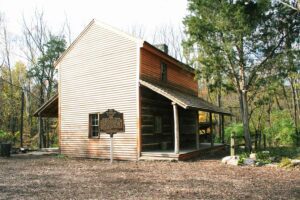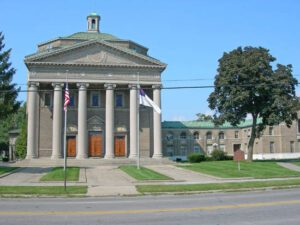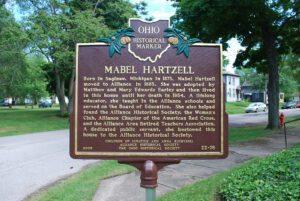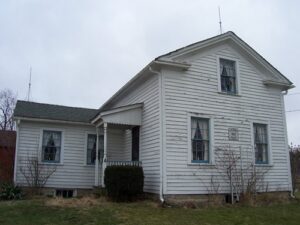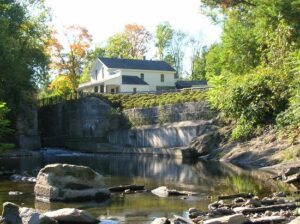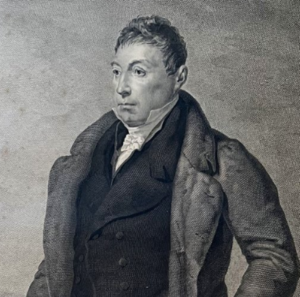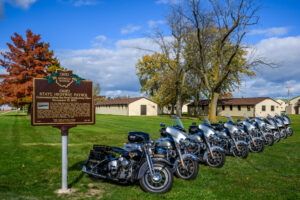, OH
The 1804 Iddings House is the oldest structure on its original site in Miami County. A second generation American and cousin to General “Mad” Anthony Wayne, Benjamin Iddings brought his wife, Phoebe, and six of their ten children up the Stillwater River into Newton Township and constructed the log house in 1804. In 1976 the structure was placed on the National Register of Historic Places with an initial restoration in 1981. Thanks to community support, further restoration was completed in 2006.
, OH
Founded in 1833, this is the oldest congregation organized within Toledo’s original boundaries. From 1844 to 1913 the church occupied a succession of three meeting houses on St. Clair Street. In 1913 First Church merged with Central Congregational Church. The pews and eight stained glass windows from the 1878 church were incorporated into this meeting house which was dedicated in 1916.
, OH
Born in Saginaw, Michigan in 1875, Mabel Hartzell moved to Alliance in 1883. She was adopted by Matthew and Mary Edwards Earley and then lived in this house until her death in 1954. A lifelong educator, she taught in the Alliance schools and served on the Board of Education. She also helped found the Alliance Historical Society, the Woman’s Club, Alliance Chapter of the American Red Cross, and the Alliance Area Retired Teachers Association. A dedicated public servant, she bestowed this house to the Alliance Historical Society.
, OH
This 48-acre farm is the last remnant of an agricultural way of life that characterized Parma Township well into the 20th century. The farmhouse, built circa 1855 by Western Reserve settler Lyman Stearns, is representative of the Greek Revival style of architecture popular in this region prior to the Civil War. The “Yankee” style barn predates the house. Suburban development following World War II engulfed virtually all of this area by the 1950s. The Stearns Homestead was added to the National Register of Historic Places in 1981. (continued on other side)
, OH
The Mustill house and store are survivors of Akron’s canal era and date to the 1840s. Joseph and Sarah Mustill moved their family from England to Akron in 1833 and owned the store and Greek Revival house at Lock 15 on the Ohio & Erie Canal. Three generations of Mustills lived and worked the grocery business at Lock 15, first Joseph and Sarah, then their son Fred with his wife Emma, and their children Maria, Frederick, Edwin and Franklin. A popular place to buy or barter goods, the store served canallers, farmers, craftsmen, and neighbors for many years.
, OH
President James Monroe invited the Marquis de Lafayette to visit the United States in 1824. Upon his arrival that August, Lafayette embarked upon a 13-month tour of the nation, visiting all twenty-four states and traveling 6,000 miles. The nobleman was accompanied by his son, George Washington Lafayette, and his private secretary, Auguste Levassuer. Hailed as the “Nation’s Guest,” Lafayette was feted with parades, speeches, dinners, and balls concluding with a banquet at the White House.
, OH
This location marks the site where the first Ohio State Highway Patrol cadet class graduated on November 15, 1933. Known as the Camp Perry School, Colonel Lynn Black opened the training on October 3, 1933, after House Bill 270 created the Division. Colonel Black received over 5,000 applications for the inaugural class, which was trimmed to approximately 125 individuals who formed the first training class. The Ohio National Guard graciously volunteered the use of this facility for the training. The newly formed Highway Patrol purchased 54 new motorcycles to be used for patrol duties. Many of the cadets had no prior experience operating motorcycles and had to be trained in short order. Cadets faced extreme adversity, including frigid temperatures and a lack of heating in the facilities. Severe weather shortened training for the cadets. The first class of 60 new Patrolmen graduated on November 15, 1933.
The Ohio State Highway Patrol’s core values are instilled into all new recruits and continually reinforced. They are the foundation upon which a trooper can be a consummate public servant; Adaptability, Attention to Detail, Diversity, Family, Honesty, Officer Safety, Performance Driven, Professionalism, Self-Discipline, Sense of Urgency and Team Oriented.
, OH
Albert B. “A.B.” Graham was born in Champaign County on March 13, 1868, the son of Joseph and Esther Graham. He was raised in a small rural home, but a fire destroyed the house in 1879, and the family moved to Lena where Graham attended local schools, graduating at age 17. After attending the National Normal University in Lebanon, he returned to Champaign County where he taught, then became principal, and later an innovative superintendent. Graham also was enthusiastic about teaching children the values of rural and farm living and while teaching developed a youth agricultural club, which eventually became known as the 4-H Club. In July 1905 Graham became the superintendent of Agricultural Extension at the Ohio State University. The Graham School District near Lena was named for A.B. Graham. He delivered the dedication speech at Graham High School in December 1957 and said that schools were meant to build “human souls.”


